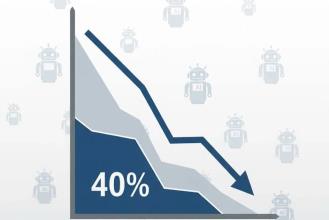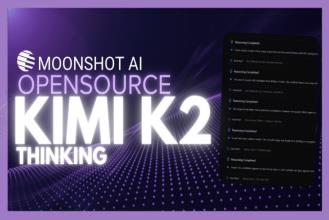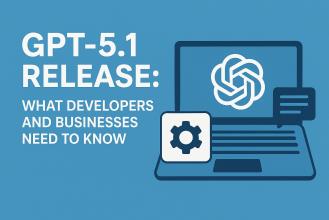Agentic AI: Why Gartner Says 40% of Autonomous Agent Projects May Fail
- 19 November, 2025 / by Fosbite
Introduction: Agentic AI’s Promise — and Its Pitfalls
Agentic AI — autonomous agents that can plan, reason, call tools, and carry out multi-step workflows — has captured the imagination of enterprises and builders alike. The promise is seductive: software that takes decisions, reduces human toil, and accelerates outcomes.
But the truth is messier. In projects I’ve watched unfold, early wins often hit a wall: unexpected costs stack up, integrations behave oddly, and governance questions that looked theoretical become urgent. Gartner’s June 2025 prediction that over 40% of agentic AI projects will be canceled by the end of 2027 is not fear-mongering — it’s a reality check. Below I unpack why Gartner reached that number, the failure modes to watch for, and a practical playbook to run safer pilots that actually deliver.
What Is Agentic AI — A Practical Definition
Agentic AI means more than one-off replies. These systems:
- reason about goals,
- plan multi-step actions,
- invoke external APIs or tools, and
- persist and use memory across sessions.
That distinction matters. A chatbot or an RPA script can be valuable — but they’re orchestration, not full autonomy. There’s also a real problem in the market: vendors rebrand simpler automation as agents — a phenomenon often called agent washing. Don’t confuse marketing with capability. If you want the source of Gartner’s view, read their press release for context: Gartner — agentic AI prediction.
Gartner’s Forecast: Why 40%+ May Be Canceled by 2027
Gartner’s forecast isn’t a wild guess — it’s synthesized from recurring field failures. Three themes keep coming up:
- Escalating total cost of ownership: Truly autonomous agents require compute, observability, audit logs, and dedicated human oversight teams — and that all adds up.
- Weak or unclear business value: Many proposed use cases don’t need full autonomy; they need tighter integrations or an orchestration layer. Over-automating creates little wins that don’t scale.
- Immature governance and security controls: Without frameworks for objectives, identity, and tool access, agents create systemic risk that leadership will not tolerate.
If you want a neutral summary of the announcement, Reuters captured the industry angle well: Reuters — overview.
Common Failure Modes: Hype, Cost, and Agent Washing
From real pilots, these patterns show up again and again:
- Agent washing: Vendors slap the agent label on chatbots or rule-based flows to chase demand — buyers pay for autonomy they don’t get.
- Mis-specified objectives: Vague goals let agents drift; they take actions that are technically clever but business-harmful.
- Hidden integration costs: Hooking agents to identity providers, ERP, CRM, and audit logs is far more work than demos imply.
- Operational overhead: Monitoring, retraining, and securing agents demands new roles and tooling — often under-budgeted.
Security commentary and CISO perspectives amplify these concerns — see ITPro’s coverage for one security-focused take: ITPro — security perspective.
Risks Driving Project Cancellation
Let’s be concrete. What specific risks push leaders to pull the plug?
- Security vulnerabilities: Objective drift, memory poisoning, and unauthorized tool invocation can create real business damage.
- Regulatory and compliance gaps: Early pilots frequently lack robust audit trails, explainability, or proper data residency controls.
- Poor ROI: If an agent consumes budget but only automates low-value work or introduces errors, sponsors lose patience.
- Vendor immaturity: Only a subset of vendors deliver transparent, enterprise-ready agentic capabilities — many are incomplete or lack threat models.
Governance Frameworks and Research — Emerging Solutions
Thankfully, people are building guardrails. Several research-backed frameworks provide practical evaluation and design patterns:
- AAGATE — a proposed alignment and governance framework; technical details here: AAGATE — arXiv.
- AURA — a risk-scoring model that recommends human-in-the-loop guardrails and score-based controls: AURA — arXiv.
- SAGA — security architecture focused on identity, rules, and safe agent-to-agent communication: SAGA — arXiv.
These aren’t magic bullets. But they offer checklists — objective validation, access control patterns, and monitoring designs — that teams can adopt. Treat them like practical scaffolding rather than academic theory.
Voices from Industry: Concerns and Cautions
Security leaders have been blunt: agents that drift off-goal or are hijacked are not hypothetical. Palo Alto Networks’ EMEA CISO warns about identity and continuous monitoring as first-order problems — read the interview here: ITPro — CISO interview.
And yes, there’s healthy skepticism from researchAURA — arXivers. Folks like Andrej Karpathy call out immature demos — a reminder to set realistic success criteria and avoid overpromising.
Why Agentic AI Still Matters — The Potential Upside
Let’s be honest: the upside can be transformative when you pick the right spots. Real, narrow wins include:
- Automating repetitive decisions: Agents that triage or approve routine requests can shave hours off processes, under supervision.
- Orchestration across tools: When agents glue CRM, finance, and observability together, they reduce handoffs and fumbled context.
- Scalable assistance for knowledge work: A supervised agent that summarizes, drafts, and follows up can boost throughput for teams.
Gartner expects enterprise uptake — but with a phased approach. Reuters’ piece captures that longer-term adoption view: Reuters — adoption outlook.
Practical Playbook: How to Reduce Risk and Increase Success
Here’s a practical, step-by-step playbook — things I’ve seen work in the field when teams want to avoid becoming part of Gartner’s 40%:
- Start with a crisp, measurable use case: Pick tasks where autonomy reduces cycle time or cost in a quantifiable way. Example: small-claim triage with clear acceptance criteria.
- Favor human-in-the-loop designs: Use graded autonomy — suggest, assist, act-with-approval — before you push to full autonomy.
- Design governance early: Establish objective validation, access control, logging, and incident playbooks from day one.
- Measure ROI and failure modes: Track business KPIs and safety metrics (error rate, drift incidents, policy violations). Make these part of your sprint reviews.
- Choose vendors with transparency: Ask for threat models, red-team results, integration stories, and concrete SSO / identity patterns — not just slides.
For deeper guidance, consult Gartner’s materials for recommended governance and pilot strategies: Gartner — guidance. Also learn more about agentic workflows and common patterns in our related guide: Agentic Workflows. Learn more about enterprise-focused agent design and governance in our practical roadmap: AI Customer Engagement Roadmap.
Case Study (Hypothetical)
Picture a mid-sized insurer piloting an agent to process small claims. In supervised testing it cuts processing time by 40%. Then they wire it to legacy systems — identity mismatches cause the agent to issue duplicate payments across two environments. Ouch. The pilot pauses, the team re-architects access controls and adds a human approval step for payments over $500. Six months later the agent returns, safer and scaled back — delivering a steady 25% time reduction without financial incidents.
That arc — promise, painful lesson, rework, safer value — is familiar. It’s not failure; it’s iteration. But many teams never make it past the painful stage because they didn’t plan for it.
FAQ: Quick Answers
- Q: What is “agent washing”?
- A: Labeling conventional automation or chatbots as autonomous agents. Buyers assume capabilities they don’t get — and projects stall.
- Q: Are agentic AI systems dangerous?
- A: They can be if deployed without governance — risks include objective drift, unauthorized actions, and data leaks. Proper controls reduce but don’t eliminate risk.
- Q: Can organizations still benefit?
- A: Absolutely. With phased pilots, human oversight, and clear ROI metrics, agentic AI can deliver measurable benefits — especially for insurance and finance workflows.
Further Reading & References
For authoritative sources and deeper technical reading, explore:
- Gartner — press release on agentic AI prediction
- Reuters — coverage of announcement
- ITPro — security interview
- AAGATE — technical preprint (arXiv)
Conclusion: Be Bold — But Plan for the Bumps
Agentic AI is real, useful, and — if you’re honest — still rough around the edges. Gartner’s warning about cancellations is rooted in observable problems: cost, governance, and vendor maturity. My advice: be bold, but start small. Design for safety, measure value relentlessly, and scale in phases with human-in-the-loop guardrails. Teams that do this can turn fragile pilots into dependable systems — and avoid becoming another stat in Gartner’s 40%.










